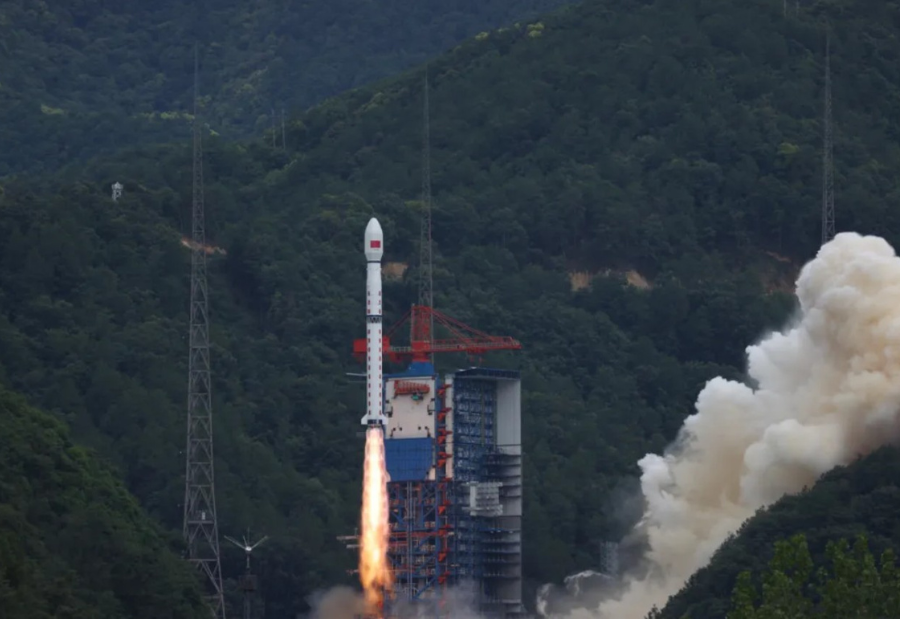China has launched a new pair of experimental satellites, continuing a busy schedule of space missions in September. A Long March 2D rocket lifted off at 11:00 p.m. Eastern on 28 September (0300 UTC, 29 September) from the Xichang Satellite Launch Center in southwest China, soaring into heavy clouds above the forested hills of the region.
The state-owned China Aerospace Science and Technology Corporation confirmed the successful mission, identifying the payloads as Shiyan-30 (01) and (02). True to the nature of Shiyan missions, few details and no images were released. According to official sources, the satellites will be used to test and verify Earth observation technology, developed by the Shanghai Academy of Spaceflight Technology.
Data from international space tracking teams show the satellites entered circular orbits at an altitude of around 590 kilometres, with an inclination of 35 degrees. Analysts believe Shiyan satellites are often used to trial new sensors, communications systems and environmental instruments, playing a role in validating advanced space technologies. Previous missions in the series have demonstrated applications ranging from environmental monitoring and remote sensing to electronic intelligence, situational awareness and even manoeuvres such as satellite rendezvous and proximity operations.
The Shiyan programme is known for operating in different orbital regimes. While many satellites remain in low Earth or near-polar orbits, others have reached geosynchronous orbits, including Shiyan-12 satellites thought to act as potential inspector spacecraft. The recently launched Shiyan-29 was observed orbiting at about 800 kilometres above the geostationary belt at a rare inclination, making its role difficult to determine.
This latest launch marked the 100th mission for the Long March 2D rocket, only the second Chinese rocket to achieve triple-digit flights after the Long March 3B. It was also China’s 10th launch in September, making it one of the busiest months for the nation’s space sector. These included Shiyan-29, military Yaogan satellites, a large Earth observation satellite in medium Earth orbit, and missions for the Guowang and Geesatcom constellations as well as the Fengyun weather satellite fleet.
Sunday’s launch was China’s 59th orbital attempt of 2025, with one failure recorded earlier in August. Looking ahead, a Long March 8A mission from Hainan and the second Gravity-1 solid rocket from Orienspace are both scheduled for around 10 October.
Also read: Viksit Workforce for a Viksit Bharat
Do Follow: The Mainstream formerly known as CIO News LinkedIn Account | The Mainstream formerly known as CIO News Facebook | The Mainstream formerly known as CIO News Youtube | The Mainstream formerly known as CIO News Twitter |The Mainstream formerly known as CIO News Whatsapp Channel | The Mainstream formerly known as CIO News Instagram
About us:
The Mainstream formerly known as CIO News is a premier platform dedicated to delivering latest news, updates, and insights from the tech industry. With its strong foundation of intellectual property and thought leadership, the platform is well-positioned to stay ahead of the curve and lead conversations about how technology shapes our world. From its early days as CIO News to its rebranding as The Mainstream on November 28, 2024, it has been expanding its global reach, targeting key markets in the Middle East & Africa, ASEAN, the USA, and the UK. The Mainstream is a vision to put technology at the center of every conversation, inspiring professionals and organizations to embrace the future of tech.




